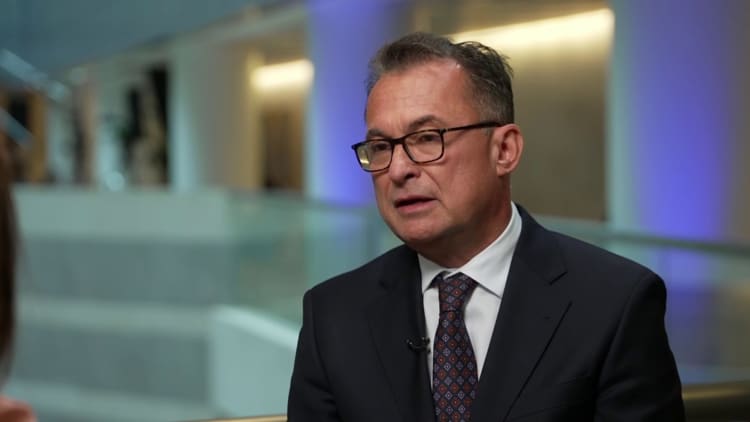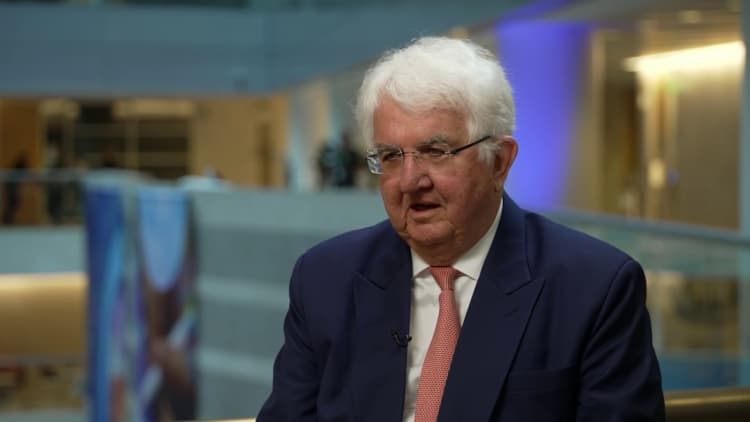
Joachim Nagel, president of Deutsche Bundesbank, during A Bloomberg Television interview following the central bank’s “Annual Report 2023” news conference in Frankfurt, Germany, on Friday, Feb. 23, 2024. “
Alex Kraus | Bloomberg | Getty Images
European Central Bank policymaker Joachim Nagel said Wednesday that a rate cut for the institution looks increasingly likely for June, but added that certain parts of the incoming inflation data still look higher than desired.
“Talking about the June meeting, I think the probability is increasing that we will see a rate cut in June but there are still some caveats,” the chief of Germany’s Bundesbank told CNBC’s Karen Tso at the IMF Spring Meetings taking place in Washington, D.C.
“Core inflation is still high, service inflation is high. For the June meeting we will get our projections, so we will get our new forecasts and if there is a confirmation that inflation is really going down and we will achieve our target in 2025, as I said, the probability is becoming higher that this rate cut is here for the June meeting,” Nagel said.

When asked about wage price pressures still lingering in the euro area, he said that in Germany there is still some wage momentum but that it was broadly still on a downward trajectory. On energy prices, he said a recent uptick in oil prices — compared with last year — was an “uncertainty” in what he described as a volatile environment.
“I think we learned a lesson in 2022, we are exposed to all this,” he said regarding a crisis in Europe that was particularly acute for the industrial sector in his homeland.
“We are more resilient than maybe we were two years ago. But nevertheless if oil prices, energy prices, are going up this is not only something for Germany — this is for all of us.”
Several ECB officials have made remarks about their expectations for interest rates in recent days.

Earlier on Wednesday, Mario Centeno, governor of Portugal’s central bank, said it was “about time to change this monetary policy cycle.” Centeno pointed to slowing inflation, but also reiterated that the ECB’s main decision-making body was data-led.
The ECB’s June interest rate decision would be “very important,” he said.
“I’m sure that we will deliver the response that is consistent with the recovery of the euro area economy that we have in our forecast,” he told CNBC’s Karen Tso, noting that market expectations for June were “very clear.”
Markets are widely pricing in the first rate cut from the ECB to take place in June.
On Thursday, the ECB left interest rates unchanged for the fifth time in a row. The central bank also changed its language around potential rate cuts, noting that a reduction “would be appropriate” if the bank felt confident inflation was falling back toward its 2% target “in a sustained manner.”
Euro zone inflation slowed by more than expected to 2.4% in March.

Earlier this week, ECB President Christine Lagarde said that unless there were any major shocks, the ECB was on track to cut interest rates soon. The process of disinflation was proceeding according to expectations, she told CNBC’s Sara Eisen.
“We just need to build a bit more confidence in this disinflationary process but if it moves according to our expectations, if we don’t have a major shock in development, we are heading towards a moment where we have to moderate the restrictive monetary policy,” she said.
Separately, Austrian central bank Governor Robert Holzmann on Wednesday said the ECB was looking at economic growth as well as inflation as both could impact monetary policy and interest rate decision-making.
Holzmann said geopolitical tensions in the Middle East were the biggest risk when it comes to interest rate cuts, especially due to the potential impact on energy prices.
He also added that he wasn’t fully committed to a June rate cut just yet, explaining that the bank was waiting on the results of a number of wage negotiations, which happen in the spring, as well as developments in the oil market.







